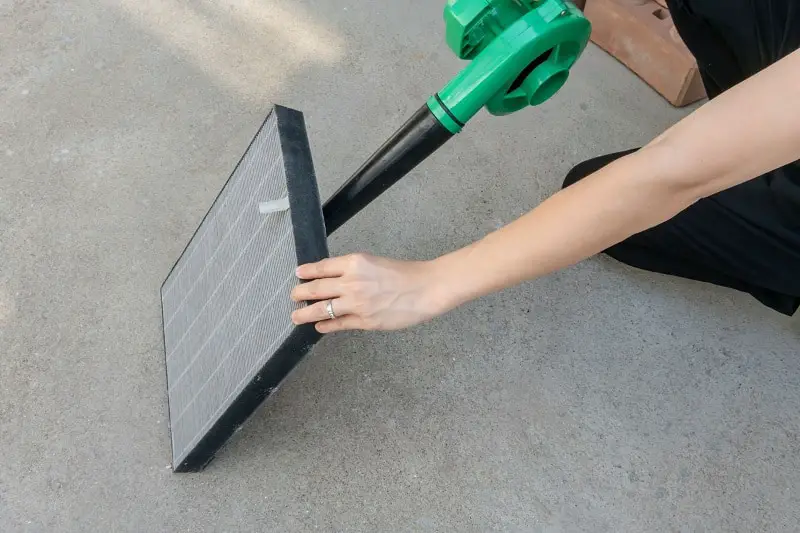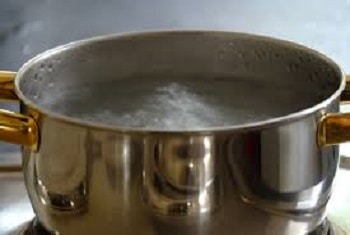Carbon filters can be expensive, especially if you need to change them often because of chlorine or odors in your water or because of fine particles and odor in the air that you breathe.
Carbon-based filters are able to capture small particles and chemicals in the carbon pores that can cause odors and odd taste. A carbon filter can be cleaned and reused, but it will lose its effectiveness over time.
Carbon is a very durable material that will not break down quickly when used for common water filtering. If you have poor tasting water, or water that has an odd odor, a carbon filter may be a great and reusable option to improve your drinking water.
Why do we use carbon filters anyway?
Carbon can be used in dry filters that filter out fine particles in the air that can cause odors or allergic reactions and also in wet filters that are used in water treatment filtration to remove chlorine and odors in water.
Either type of filter can be cleaned and reused, but only a few times before the carbon will no longer be able to filter out the fine particles that we use it for.
First, let’s talk about what is happening in a carbon filter that takes out odors and other particles. Carbon is a mineral that is mined from the earth often for is fine filtering abilities.
The pores in carbon are much smaller than a man-made filter, and therefore carbon is able to filter out much finer particles.
How does a carbon filter make water or air better?
Carbon is very commonly used in water filtration for its ability to remove chlorine that is often used by municipal water sources to purify the water of bacteria and other harmful organic organisms.
If your home’s water is supplied by your local city or town, it is very likely that it has been treated with chlorine in order to make the water safe for you to drink and bathe in. Depending on how close you are to the water treatment facility, you may have a very high level of chlorine or you may have none at all.
As chlorine disinfects your water supply, it will lose potency. In other words, the usefulness of chlorine is not endless, for every little bit of disinfecting that chlorine does, it uses up some of its strength.
So if you are using public water supply from a city, town or development, you should check for chlorine in your water and use a carbon filter to remove it.
Carbon is also very effective at filtering tiny particles that cause odors as they are too small for most other filters to filter out.
Both odors in the water and in the air can be filtered out to a point using a carbon filter, and both wet and dry filters can be cleaned and reused a few times.
The carbon itself will continue to filter both water or air as long as the pores on the surface of the carbon are free of debris that would inhibit the water or air to pass through the carbon. So if we can loosen up any debris in the pores of the carbon and rinse it away, the carbon will continue to work as a fine particle filter.
How to clean a dry carbon filter used for filtering the air.
First, remove the filter from the filter frame holding the filter in place.
Second, since we are going to be cleaning the carbon filter, we want to clean the housing that the filter sits in as well. Vacuum out the housing with a crevice attachment and wipe it down with a damp cloth if necessary to ensure that there is no leftover debris that will clog up the filter after you replace it.

Hint: You can use a small tube or hose to get deep into the filters housing if your crevice tool doesn’t quite reach. Simply cup your hand over the end of your vacuum’s hose and slide the small hose between your fingers, then use the small hose to get the spots that you couldn’t reach with the larger crevice tool.
Third, use your vacuum to remove as much debris from the filter as possible. Then when you’ve got the filter as clean as you can with your vacuum, use a slightly moist, lint-free towel and gently wipe down the outside of the filter. Clean the towel and ring it out thoroughly, then wipe the filter down again until you no longer see much dirt coming off the filter.
Fourth, let the filter dry completely. Leave the filter out in the sun for a few hours or in a very dry area of the home to allow it to dry before putting it back into the filter housing.
You are not going to get the filter 100% clean, and you don’t have too. Just get the majority of the dirt off the filter so you can reuse it a few times. Remember, you only want to reuse the filter a few times, after you have cleaned it two or three times the pores of the carbon will no longer be able to allow proper airflow.
How to clean a wet carbon filter used for water filtration.
To clean a wet carbon filter we want to first prepare a simple cleaning solution. I recommend using distilled water that has been heated as much as is you can, up to a temperature that is still comfortable to the touch.

We also want to get a bucket full of clean water to rinse out the filter housing after we clean it. This does not have to be distilled water, regular tap water should be fine.
Next, add a few drops of dishwashing liquid to the distilled water and give it a stir to mix it in. Make this solution in a big enough container to fully submerge the filter cartridge that we are going to be cleaning.
Now let’s remove the wet filter.
First, depressurize the filter housing by shutting off the water going to the filter and shutting off the water after the filter. Next, press down the pressure relief button on the top of the filter housing, a small amount of water may dribble out but that is perfectly normal.
Second, remove the carbon filter from the housing.
There is usually a wrench that is designed specifically for your individual filter housing, but if you do not have one a belt type wrench will work great as well. Screw off the bottom of the housing and remove the filter cartridge.
Third, submerge the filter cartridge into the prepared distilled water and dishwashing liquid. Let the filter cartridge sit in the solution for several minutes. Fifteen to thirty minutes should surface depending on how dirty the filter is.
Fourth, give the filter a good shake. Shake and wiggle the filter around in the cleaning solution for several minutes. You should see dirt and debris flake of the filter as you do this, so keep shaking as long as you continue to see the dirt coming off the filter.
Fifth, thoroughly rinse the filter cartridge. In clean water (distilled water is preferred, but not necessary), give the filter a good shake for a minute or two, then replace the water with new, clean water if you feel it necessary and shake the filter in the clean water again.
Sixth, give the inside of the filter housing a wipe down with some chlorine-based cleaner to remove any dirt or grime build-up. Then give the housing a good rinse in clean water, and it will be ready to go.
Now your carbon filter should be just about as clean as it can get. There is no need to let the filter cartridge dry, you can now replace the filter into the filter housing once the housing has been cleaned.
There you have it. Remember that we only want to clean these filters two or three times. After that, you should replace the filter with a new one and always clean the housing when changing the filter.
If it is time for you to replace your carbon filter, check out my Recommended Filters to find the best replacement filter for your needs.


Hi, We have 2 – 20″ big blue, (one sediment, one carbon) filters. I plan to remove the current carbon filter and replace it with a new one? Then wash the currently used carbon filter let it dry and then next month repeat the process?
Is it okay for the carbon filter to dry out and still be able to reuse it next month?
Hello Gene and thank you for the question, (all three)
The carbon in the filter should be fine when it dries out and it may work well several times but if it is an embedded carbon filter with fabric or mesh around the outside, the fabric may begin to fall apart after wetting and drying several times. Other than that, you should be able to get several uses from each filter until the carbon wears down to the point when it can no longer filter.
I hope this was helpful.
Paul
Thanks for the advice on cleaning the carbon in a wet filter. I am working on cleaning the granulated carbon in a zero water filter. Any. Tips on doing that?
Hello Tom and thank you for the question.
By soaking the filter in mild chlorine or hydrogen peroxide solution, you should be able to clean the carbon to some extent but zero water filters use more than just carbon to filter your water, and just cleaning the carbon will probably be of little benefit compared to replacing the filter.
I hope this was helpful.
Paul
Hi, I have a cylindrical filters, one of them loaded with carbon. I learnt it may last for years depending on usage. Apart from backwashing; what more can I do to reactivate it after 4 or 5 years of usage. Or should I just discard it and refill?
Hello Richwake and thank you for the question.
Flushing chlorine through a bed of carbon can revitalize the carbon and prolong its effectiveness. If you can easily feed a gallon of unscented household chlorine bleach through the carbon bed (without feeding it through any other filters) it may make it last a bit longer.
But if the carbon is already 5 years old, it may be better just to replace it.
I hope this was helpful.
Paul